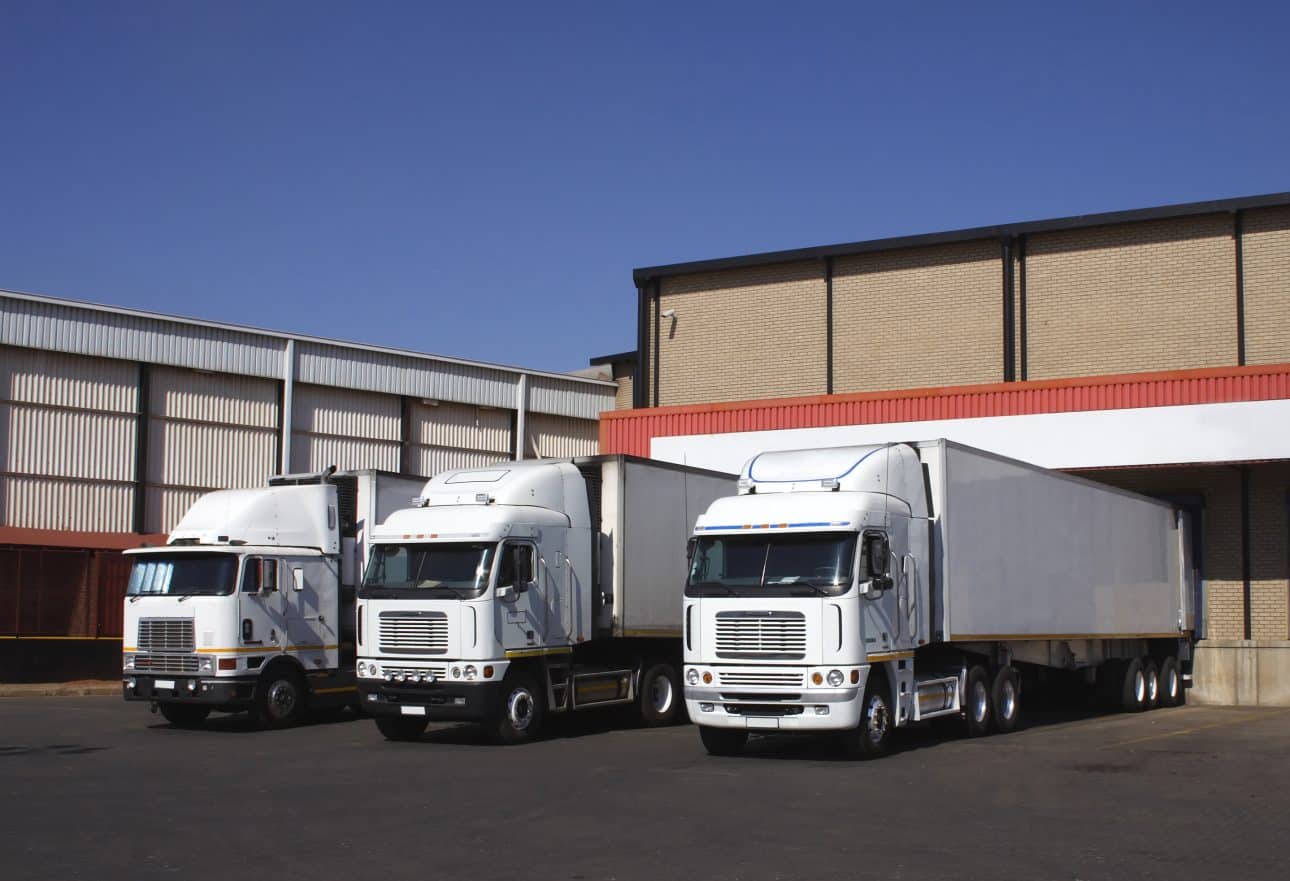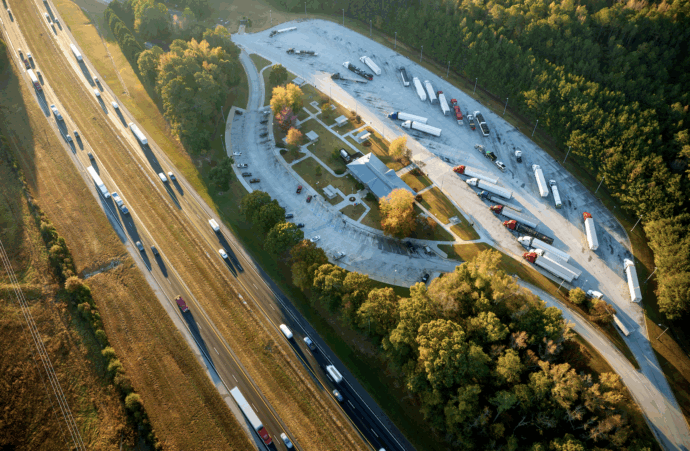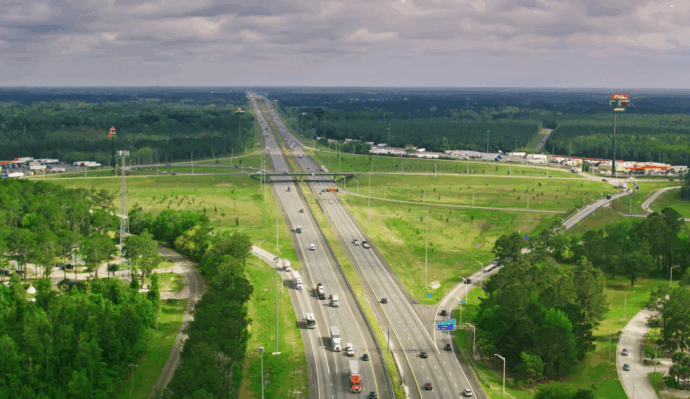Data lakes: Let’s unpack the buzzword and why it matters to you even if you’re not an IT specialist or data analyst. Every transportation insight originates from a data lake, but not all data lakes are built alike. For agency planners and analysts looking for commercial vehicle metrics, the difference lies in how well that data reflects real-world commercial movement, preserves privacy, and scales for actionable insight.
Let’s take a look at what a freight data lake is, how it works to surface mobility insights, and what you need to know to evaluate options.
Freight data lakes defined
A freight data lake is a digital storehouse of aggregated, anonymized commercial vehicle movement data. In today’s data-rich world, a data lake’s value depends on how relevant it is to the application at hand. For commercial transportation, that means the information must reflect real-world freight travel behavior across time and geography.
A context-rich freight data lake offers extensive insights for understanding a region’s commercial transportation patterns. These insights can be diluted or inaccurate if the data lake includes non-commercial vehicle information. The more limited the data set, the fewer insights are available.
Data lake quality over quantity
Extracting meaningful insight from a freight data lake isn’t about volume, it’s about focus. The most effective providers apply a disciplined process that connects your project goals to the right commercial vehicle movement metrics.
Exploring the depths of a freight data lake can be formidable because the options can quickly seem endless. To obtain relevant insights, transportation metrics providers must keep a project’s objectives in tight focus. Only then can they extract the insights that are most important and disregard irrelevant information. The process often tracks through five steps.
Identify goals
Clearly identify the purpose of your project and what success would look like. Are you looking to conduct a proper site selection analysis, develop traffic-calming strategies, improve commercial vehicle parking in your region, or something else? No matter the initiative, set an appraisable target from the beginning. This will make it easier to know what insights you’ll need to get there.
Pinpoint knowledge gaps
Once you’ve outlined the objectives, you can begin identifying where knowledge gaps exist. Which commercial vehicle insights will be most valuable for reaching your organization’s desired outcome? This will help your provider build the most effective queries for the data lake.
Select relevant data categories
A freight data lake must contain the key data that makes surfacing specific insights easy. Determine which of these will be most beneficial to your analysis. For example, if you are interested in commercial parking data or freight movement patterns, you probably don’t need access to data that includes personal vehicle travel. A data lake focused on what truly matters to your analysis can take less time to analyze, and provide deeper insights.
Establish clear parameters
Once you’ve identified the data categories, choose which parameters will help you go even deeper. Success here depends on identifying and deploying highly specific criteria. For example, Altitude by Geotab’s Stop Analytics module offers not only find where commercial vehicles are stopping most often, but also where longer duration stops are occurring, which times are busiest for vehicle stops in your region and how trends between idle time and parked time are different. Using these additional parameters like minutes stopped and distances moved can surface even more detailed insights.
Begin analysis
Having a clear plan to address what you don’t know, identifying the right modules and extracting necessary insights will help you select the most effective freight data available. Setting up for success beforehand will ensure that you analyze the most relevant insights to your goals and use them to guide your decision-making processes.
Best practices for data privacy
For public agencies and enterprise operations, verifiable privacy protection isn’t just ethical, it’s often an operational requirement when using any type of data. Because freight data lakes rely on data about vehicle movements, protecting and anonymizing that information is critical to privacy protection and legal compliance.
When evaluating providers, consider asking about robust privacy strategies. Key questions include:
- Can your internal team access individual vehicle records for any reason? By the time data is being accessed by a mobility analyst, it shouldn’t be identifiable or re-identifiable in any way.
- Do you mix consumer and commercial vehicle data in your platform? The most protected data lakes will only contain the data set you need.
- Is privacy protection applied before or after data storage? This is sort of a trick question, because the safest answer is “both.”
- Can you provide documentation of your anonymization methodology? Expect transparency from providers who are proud of their data protection methods.
- Are your privacy controls technical (system-enforced) or procedural (policy-based)? A strong system will use both methods.
As an example, Altitude uses first-party, commercial-only data, which differs fundamentally from providers using mobile app data, synthetic models, or mixed consumer-commercial datasets. Altitude does not infer truck movements from cell phone signals or blend personal vehicle trips with commercial traffic, and this eliminates entire categories of privacy risk.
Altitude applies privacy-by-design principles before data even enters our system. We anonymize at source, never mix consumer data, and maintain auditable transparency throughout the process.
Practical use cases for freight data lakes
Now that you know more about freight data lakes, let’s look at examples of how data lakes can be used in real life. Here are four use cases of how Altitude uses data-lake derived insights to transform a typical commercial transportation initiative.
Site selection for fuel retail
For a build or acquisition, frontage exposure data (including class-specific vehicle counts and vehicle miles travelled VMT) can help determine demand at candidate sites. To assess the likelihood of traffic turn-in, study route capture from nearby corridors and near-site dwell.
With these up-to-date insights, locations can be ranked by expected throughput and planners can benchmark canopy stop rates where the company already operates—all using defensible, observed movement.
Targeted corridor and safety interventions
To relieve freight bottlenecks and improve safety, bring together data about class-specific VMT growth, routing/travel-time patterns, and harsh events to diagnose where conditions are degrading and why. With these indicators, planners can produce corridor scorecards that show need, expected impact, and before/after baselines that stand up in funding reviews.
Truck parking capacity and policy
Quantify parking demand and feeder routes, then separate idling vs. parked metrics into hour-of-day patterns to pinpoint overflow and off-facility roadside parking (e.g., shoulders, ramps). With these insights, planners can estimate the capacity gap, visualize nightly peaks, and collect evidence for prioritizing capacity increases and wayfinding/policy locations.
Site selection for public EV charging
For public, retail and commercial charging programs, combine regional demand with domicile patterns (home-vs-away behavior) to understand local versus through-traffic opportunity. Then use site frontage counts and surrounding context (land use, nearby stops) to target hosts and corridors that have highest near-term utilization. These siting metrics help prioritize where demand is likely to emerge first, not just where chargers could fit.
These use cases illustrate just a few of the many ways that a freight data lake aids in surfacing deep commercial vehicle insights to accomplish specific transportation goals. In each case, Altitude’s freight data lake turns complex movement into clear, defensible insights that guide smarter infrastructure and investment decisions.
Download our Privacy-by-Design white paper to learn how Altitude ensures anonymized, commercial-only mobility insights.





